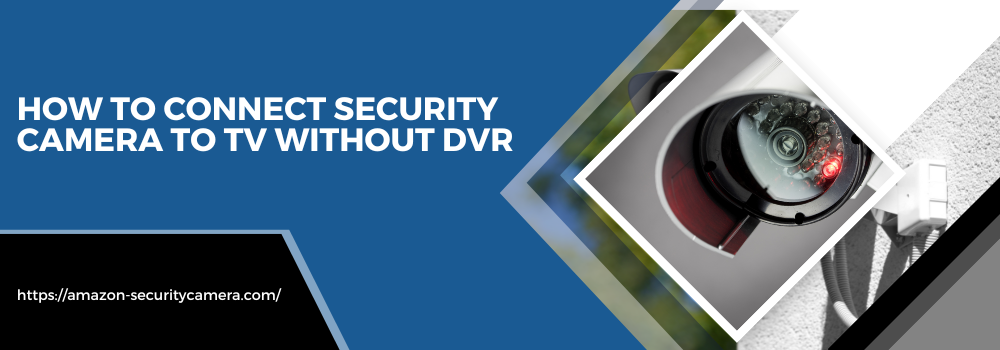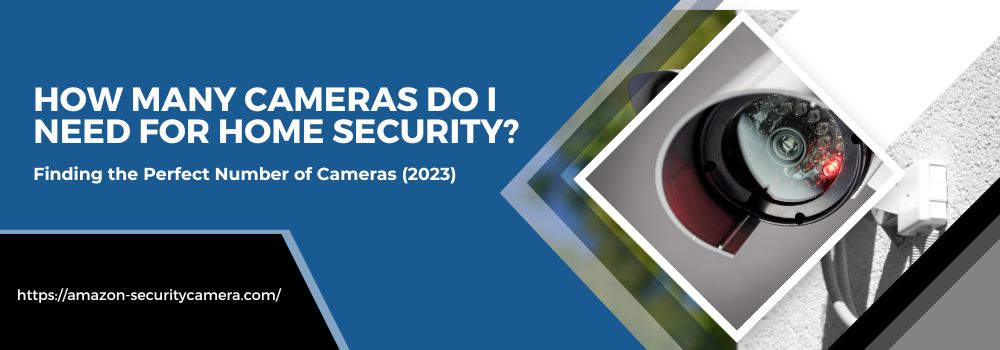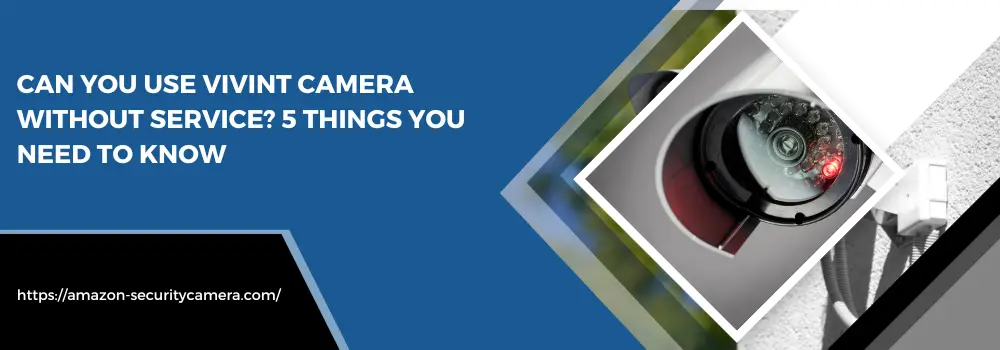How to connect security camera to TV without DVR? In today’s digital age, security is paramount and the capacity to monitor one’s home or business premises is a desirable feature. Many individuals believe that connecting a security camera to a television without a Digital Video Recorder (DVR) is a complex process. However, this is a misconception and it is a surprisingly straightforward task.
Security cameras are vital tools in maintaining safety and security in our homes or workplaces. They act as our extra set of eyes when we aren’t present and provide peace of mind. Given their importance, it is crucial to understand how they function and how they can be connected to other devices for ease of monitoring.
One common way to view the footage from security cameras is through a DVR. However, there may be instances where a DVR is not available or the user might prefer to view the footage directly through a television. This guide aims to elucidate the process of connecting a security camera to a television without the use of a DVR.
How to connect security camera to TV without DVR
Read Below to learn how to How to connect security camera to TV without DVR.
Read another article about How far can a wireless security camera transmit | 10 Best Ways
Table of Contents
Step 1: Understanding the Equipment
Firstly, it’s important to familiarize yourself with the equipment at hand. A security camera typically has a video output port and a power input port. These are essential for the connection process. The TV, on the other hand, must have a corresponding video input port. Check your model’s specifications if you are unsure.
Step 2: Procuring the Needed Cable
After identifying the ports, you need to procure the necessary cable. The type of cable you need depends on the ports available on your camera and TV. Usually, an RCA cable (one with yellow, red, and white connectors) is used. However, if both your camera and TV support HDMI, an HDMI cable would be preferable. Ensure that the cable is long enough to reach from the camera to the TV.
Step 3: Connecting the Camera to the TV
Now to the actual connection process. Connect one end of the cable to the camera’s video output port and the other end to the TV’s video input port. Ensure the connections are secure to avoid any disruptions in signal transmission. If using an RCA cable, the yellow plug should be connected to the video output port, while the red and white plugs are connected to the audio ports. In the case of an HDMI cable, simply connect it to both devices.
Step 4: Powering the Camera
The next step is to ensure that the camera has power. Plug in the power adapter to the camera’s power input port and connect it to a power source. Always check your camera’s voltage requirements before plugging it into a power source to avoid damaging the device.
Step 5: Setting the Correct Input on the TV
After the camera is powered on, you need to set your TV to the correct input. This can be done by using the remote control and selecting the input option that corresponds to the port connected to the camera. If unsure, refer to your TV’s user manual for specific instructions.
Step 6: Adjusting the TV Settings
Once the correct input is selected, you should start seeing a video feed from the camera on your TV screen. If the video feed is not clear or if there are any disruptions, you may need to adjust the TV settings.
Step 7: Positioning the Camera
Now that the connection process is complete, you can position the camera as desired. Ensure that the camera is in a place where it can cover the largest area possible, and is secure from tampering. This will depend on the camera’s field of view and your specific monitoring needs.
Additional Tips
If you are using an RCA cable, you can use a Y-cable to connect multiple cameras to one TV input. Some security cameras come with their own viewing software that can be installed on a smart TV for easier access. For better image quality and remote access, consider using a wireless IP camera. Regularly check and maintain your camera’s connections to ensure continuous monitoring.
Step 8: Monitoring and Maintenance
Finally, periodic monitoring and maintenance are crucial. Regularly check the camera and the TV to ensure they are functioning well. Clean the camera lens and maintain the cable connections to ensure uninterrupted service. Additionally, if you notice any issues with the camera’s feed or picture quality, troubleshoot and seek professional help if needed.
Connecting a security camera to a TV without a DVR is not as complicated as it may seem. By following these simple steps and tips, you can easily set up your own monitoring system for added safety and peace of mind. Remember to always prioritize security and regularly maintain your equipment for optimal performance. Happy monitoring! # Connect your security camera to a TV
With advancements in technology, it has never been easier to keep an eye on your surroundings. One of the most popular and efficient ways to do so is by connecting a security camera to a TV. Through this connection, you can conveniently view live footage.
Step 9: Troubleshooting Common Issues
In case you encounter problems, it’s helpful to know how to troubleshoot common issues such as no video feed or a blurry picture. Firstly, check all the cable connections and make sure they are secure. A loose connection can result in a disruption of signal transmission. Secondly, try changing the TV input to see if that makes a difference. If using an RCA cable, you may also need to adjust the channel on your TV to match the video source.
If these steps do not solve the issue, there may be a problem with the camera itself. Check if it is receiving power and consider resetting it to factory settings. If the problem persists, consult the camera’s user manual or seek professional assistance.
Optional Step: Recording the Footage
If you want to record and save the footage from your security camera, you can connect a digital video recorder (DVR) to your TV using an HDMI cable. The DVR will then record the footage from your camera and allow you to access it in the future.
However, keep in mind that this extra step may require additional equipment and setup. It is also important to regularly check and maintain your DVR along with your security camera for optimal performance.
Step 10: Considerations for Multiple Cameras
If you intend to connect more than one camera to your TV, considerations such as the use of a video switcher or a quad screen splitter come into play. This section will guide you on how to manage multiple camera connections.
Remember, while this guide can help you understand the connection process, always refer to your device manuals or seek professional help when in doubt, to avoid damage to your devices or voiding warranties. Adequate knowledge and caution are key to successfully connecting a security camera to a TV without a DVR. The possibilities are endless with this simple yet effective setup. So go ahead, connect your security camera to a TV, and enjoy peace of mind with added surveillance in your home or workplace. #
Conclusion
In conclusion, connecting a security camera to a TV without a DVR is an easy process that requires minimal equipment and knowledge. By following the steps outlined in this guide, you can easily set up your own monitoring system for added safety and peace of mind.
In conclusion, connecting a security camera to a TV without a DVR is an easy process that requires minimal equipment and knowledge. By following the steps outlined in this guide, you can easily set up your own monitoring system for added safety and peace of mind.
FAQ
Q#1: Can I connect any type of security camera to a TV without a DVR?
A: It depends on the type of connection available on your TV and camera. Some cameras may require additional equipment or software to be compatible with your TV.
Q#2: Is it possible to access the footage remotely using this setup?
A: No, this setup only allows for live viewing of footage on the TV. For remote access, consider using a wireless IP camera and connecting it to a network.
Q#3: Can I use this setup for outdoor surveillance?
A: Yes, as long as you have a power source and proper weatherproofing for your camera. Consider using a wireless IP camera for easier installation and outdoor use. # Resources
Q#4: Can I use multiple cameras with this setup?
A: Yes, but you may need additional equipment such as a video switcher or quad screen splitter to manage the connections. Refer to your device manuals for more information.
Q#5: Are there any security concerns with connecting a camera directly to a TV?
A: As long as you follow proper security measures and regularly maintain your equipment, there should not be any major security concerns. However, it is always recommended to consult a professional for personalized advice and guidance. # Additional Tips.



